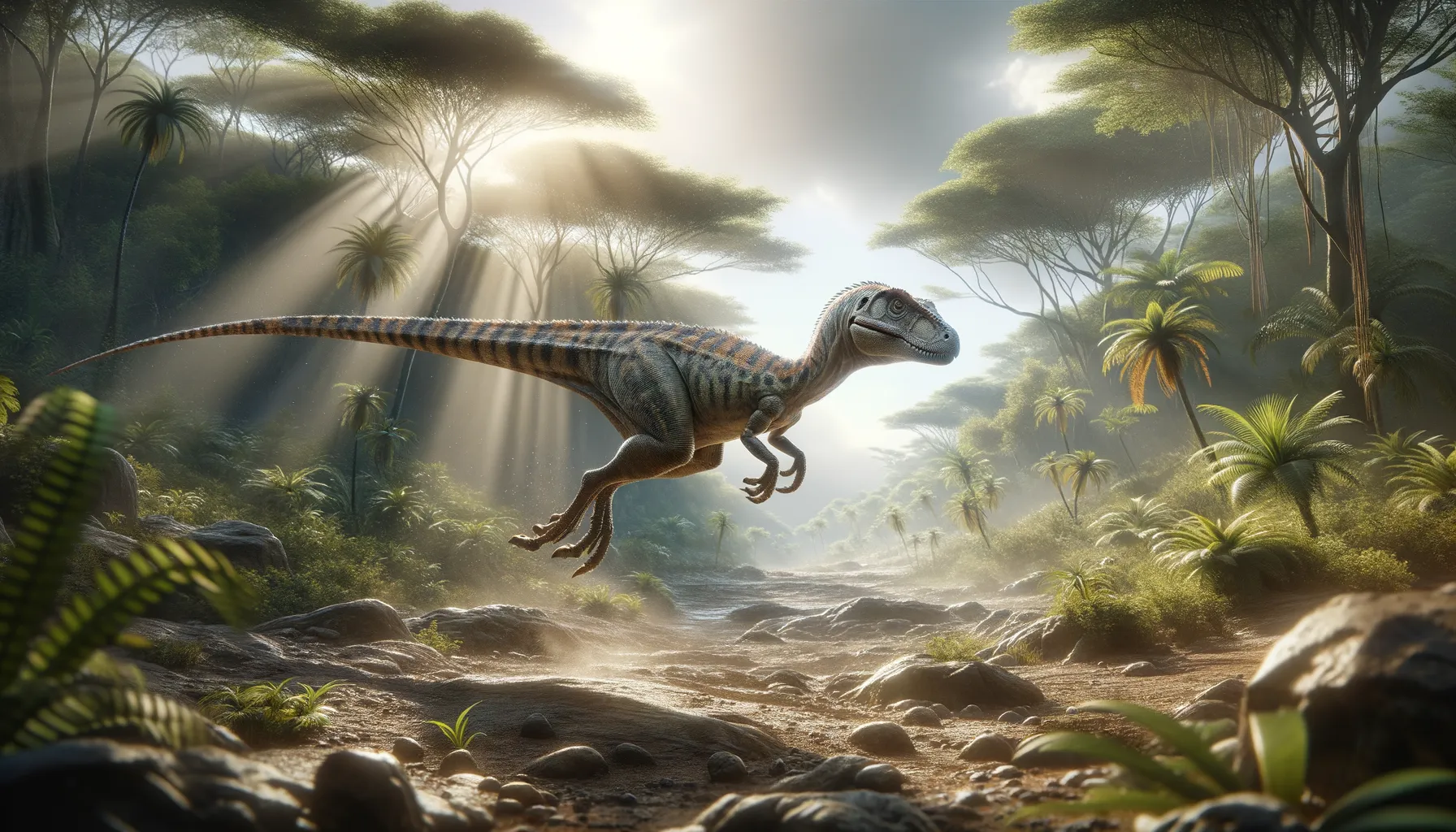
Trialestes
Swift predator on the ancient lands.
Period
Triassic
Length
Reached around 2 meters in length.
Height
Approximately 0.5 meters tall.
Weight
Estimated to weigh around 10 kg.
Trialestes was a small, fast-moving archosaur from the Late Triassic period. Not truly a dinosaur, it provides key insights into early crocodyliform evolution. This creature was agile and terrestrial, adapted for quick movements in its environment. Its remains have helped paleontologists better understand the diversity of prehistoric life forms and track the evolutionary paths leading to modern reptiles. Its discovery has been pivotal in piecing together the ancient ecosystems of South America.
Diet
Trialestes was a carnivore, primarily feeding on small animals and possibly insects. Its diet would have consisted of creatures it could overpower and consume easily, using its speed and agility.
Hunting
Its hunting behavior likely involved stalking and sudden bursts of speed to catch prey. With keen senses, it might have hunted alone or in pairs, using its environment for stealth.
Environmental challenges
Living in the Triassic period, Trialestes faced fluctuating climates and changes in vegetation. The competition for food was intense, with other predatory species sharing its habitat. Predators larger than Trialestes would have been a constant threat, requiring it to develop effective survival strategies. Moreover, habitat changes due to shifting landmasses posed challenges in finding consistent resources.
Speed
Likely agile and fast for short bursts.
Lifespan
Lived around 20 to 30 years.
First discovery
Discovered in the 1930s in Argentina.
Fun Facts
- Trialestes was a dinosaur-like reptile that lived around 230 million years ago during the Triassic period.
- It was discovered in Argentina, making it one of the earliest dinosaur relatives found in South America.
- Unlike most dinosaurs, Trialestes had features of both crocodiles and early dinosaurs, highlighting an interesting evolutionary link.
- Trialestes was relatively small, estimated to be about the size of a medium-sized dog.
- Fossils of Trialestes give scientists clues about the transition from non-dinosaurian reptiles to true dinosaurs.
- These creatures had a combination of walking on two legs and using four, showcasing their adaptability.
- Trialestes is part of a group called 'dinosauromorphs,' which were close relatives of the first true dinosaurs.
Growth and Development
Trialestes would likely have had a rapid growth rate to reach maturity quickly. This quick growth provided an advantage in avoiding predators and optimizing hunting capabilities. Juveniles probably had different dietary and habitat needs than adults, gradually adapting as they matured. The species relied heavily on environmental cues to guide their development stages efficiently.
Habitat
Trialestes lived in semi-arid regions with occasional lush-oases. These areas were characterized by sparse vegetation interspersed with denser patches along water sources. The varied terrain allowed Trialestes to exploit different niches for hunting and shelter. Seasonal changes in its habitat required adaptability in its daily routines and movements.
Interaction with other species
Trialestes coexisted with early dinosaurs and other predatory reptiles, often competing for similar prey. While primarily a predator, it also had to avoid becoming prey for larger carnivorous species. Interaction might have included occasional confrontations over territory or resources, which could influence social structure. Its presence in an ecosystem affected the behaviors and evolutionary trajectories of surrounding species.
Natural lifespan
Trialestes likely had a natural lifespan of about 20 to 30 years.
Reproduction
Trialestes probably laid eggs, like most archosaurs, in nests it constructed in the ground. Parental care might have been minimal, with young largely fending for themselves upon hatching. Clutch size could have varied, optimizing survival chances in unstable environments. Reproductive strategies ensured a steady population despite predation and environmental challenges.
Social behaviour
Trialestes was likely a solitary creature, focused on personal survival and hunting efficiency. Social interactions might have been limited to mating seasons or territorial disputes. Occasional symbiotic relationships could have formed with other species for safety or resource benefits. It adapted its behavior to maximize its survival in mixed-species environments.
Fossil locations
Fossils of Trialestes have primarily been uncovered in Argentina, reflecting its South American origins. The discoveries have been crucial in understanding the continental distribution of early archosaur relatives. Argentinean fossil sites continue to yield insights into its ecological role during the Triassic. These findings improve knowledge about the diversity and evolution of early reptiles in prehistoric environments.
